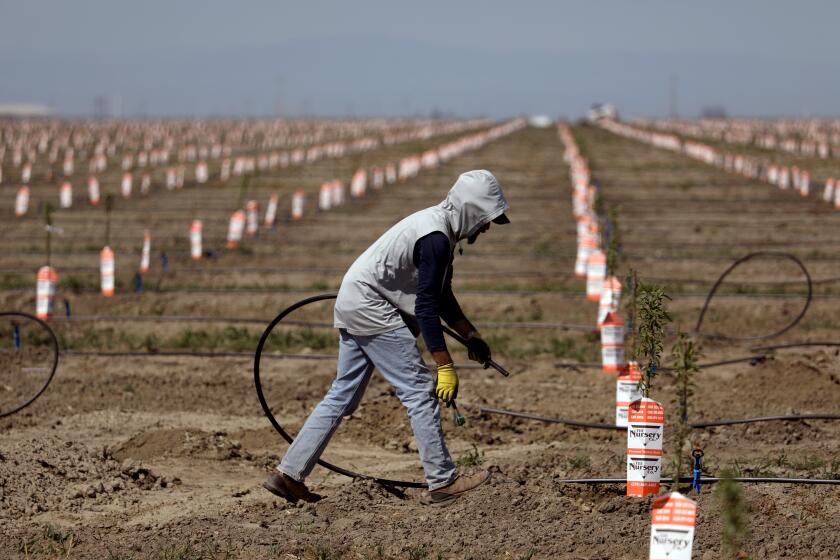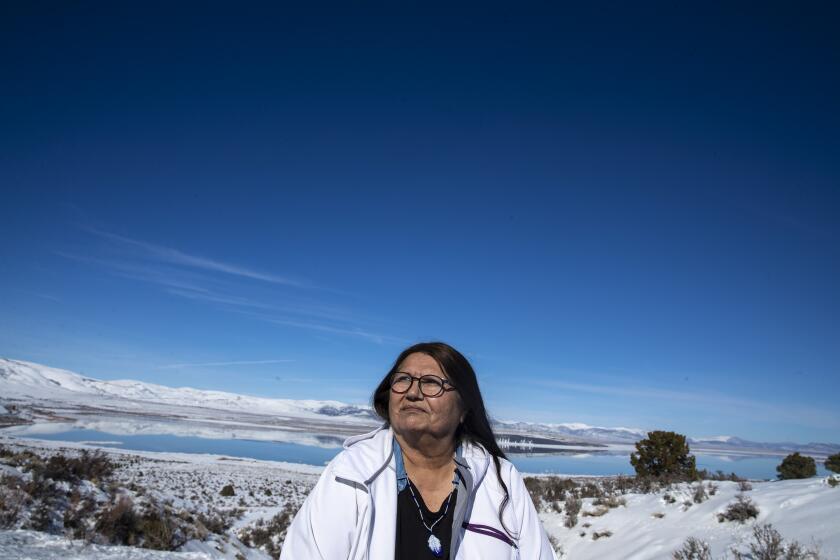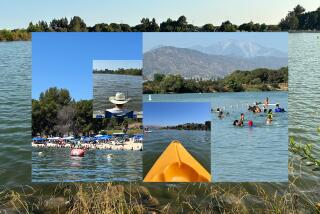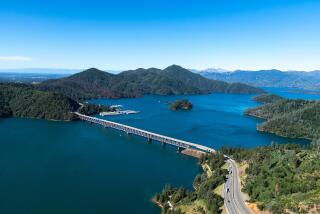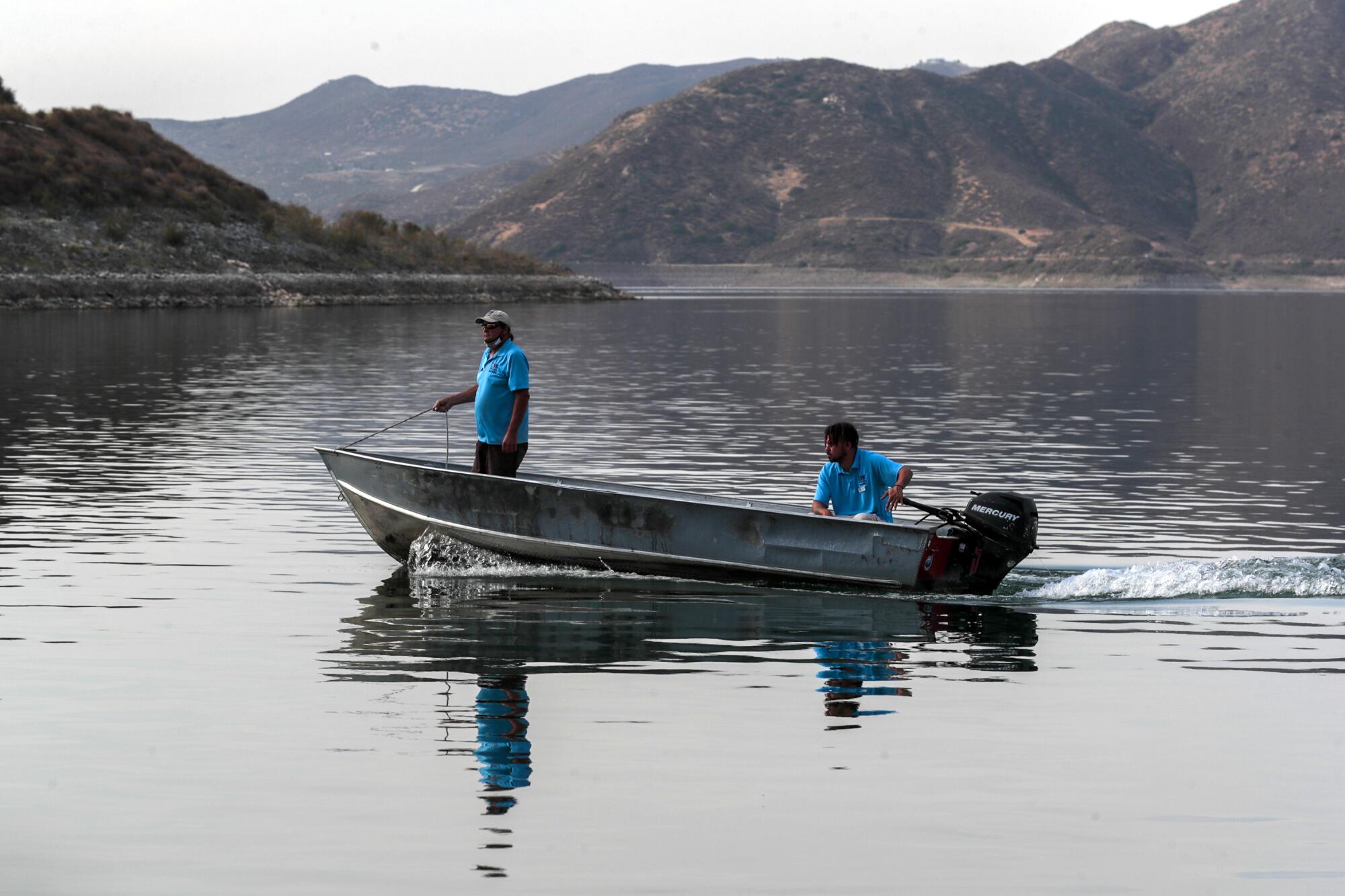
- Share via
HEMET, Calif. — Mechanical engineer Brent Yamasaki set out amid the recent blistering heat wave to take stock of the giant dams, pumps and pipes that support Diamond Valley Lake in Riverside County, the largest storehouse of water in Southern California.
The reservoir, which he helped build 25 years ago, is 4½ miles long and 2 miles wide and holds back nearly 800,000 acre-feet of water — so much that it would take 20,000 years to fill it with a garden hose.
Stand in a pontoon boat throttling up across its glassy surface, and the reservoir’s jaw-dropping vastness takes hold.
“It’s an inland ocean,” said Yamasaki, regional chief of operations for the Metropolitan Water District, “that Southern California can tap into in the event of a major disaster and in dry times like we’re in right now.”

Pressed into service by a major earthquake, for example, the reservoir is designed to deliver enough drinking water to meet the needs of 18 million people from Ventura County to San Diego County for six months.
The facility near Hemet, about 90 miles southeast of Los Angeles, is the region’s hydraulic heart. Water flows in via a major artery: a conduit connected to State Water Project supplies at Lake Silverwood, 45 miles to the north.
“The state should prepare for another five to six years of drought.”
— Jay Lund, co-director of the Center for Watershed Sciences at UC Davis
It is also part of a galaxy of new laws, low-water landscaping strategies, storage projects, conservation efforts, wastewater recycling and desalination plants that Southern Californians have invested in to save water in an arid landscape prone to droughts.
A drought now in its second year, an early-season heat wave and a shortage of snowmelt in the Sierra Nevada range have drained hundreds of California’s reservoirs to their lowest levels in decades, raising anxieties about meeting demands for agriculture while preserving flows for habitat and endangered species.
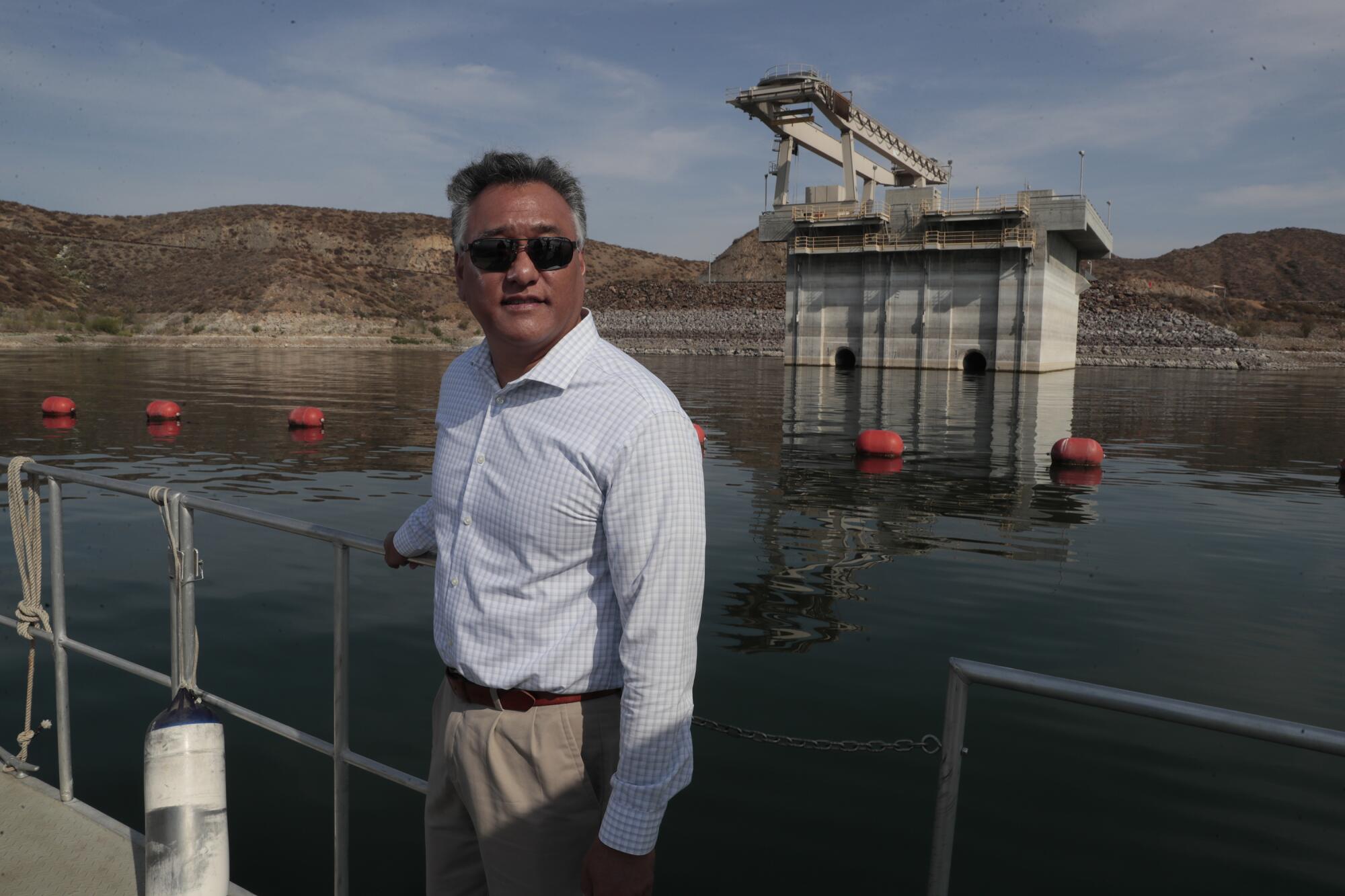
In May, those concerns spurred Gov. Gavin Newsom to declare a drought emergency in 41 counties in Northern and Central California — areas that are grappling with acute water supply shortages.
But water availability in Southern California “is expected to remain relatively stable over the next few years,” says Deven Upadhyay, the MWD’s chief operating officer. “Diamond Valley Lake is a key part of that forecast. Another is that customers aren’t using as much water as they used to.”
So far, there are no plans to turn off urban taps or launch a special public campaign urging people to conserve water.
As the San Joaquin Valley braces for yet another season of drought, some growers are openly questioning the future of farming here.
Jay Lund, co-director of the Center for Watershed Sciences at UC Davis, said urban water use was reduced substantially during the 2012-16 drought and has remained at lower levels.
But the hot, dry weather, new environmental protections and cutbacks in water allotments do not bode well for wildlife and Central Valley farmers reliant on the all-important shrinking snowpack on the Sierra Nevada range.
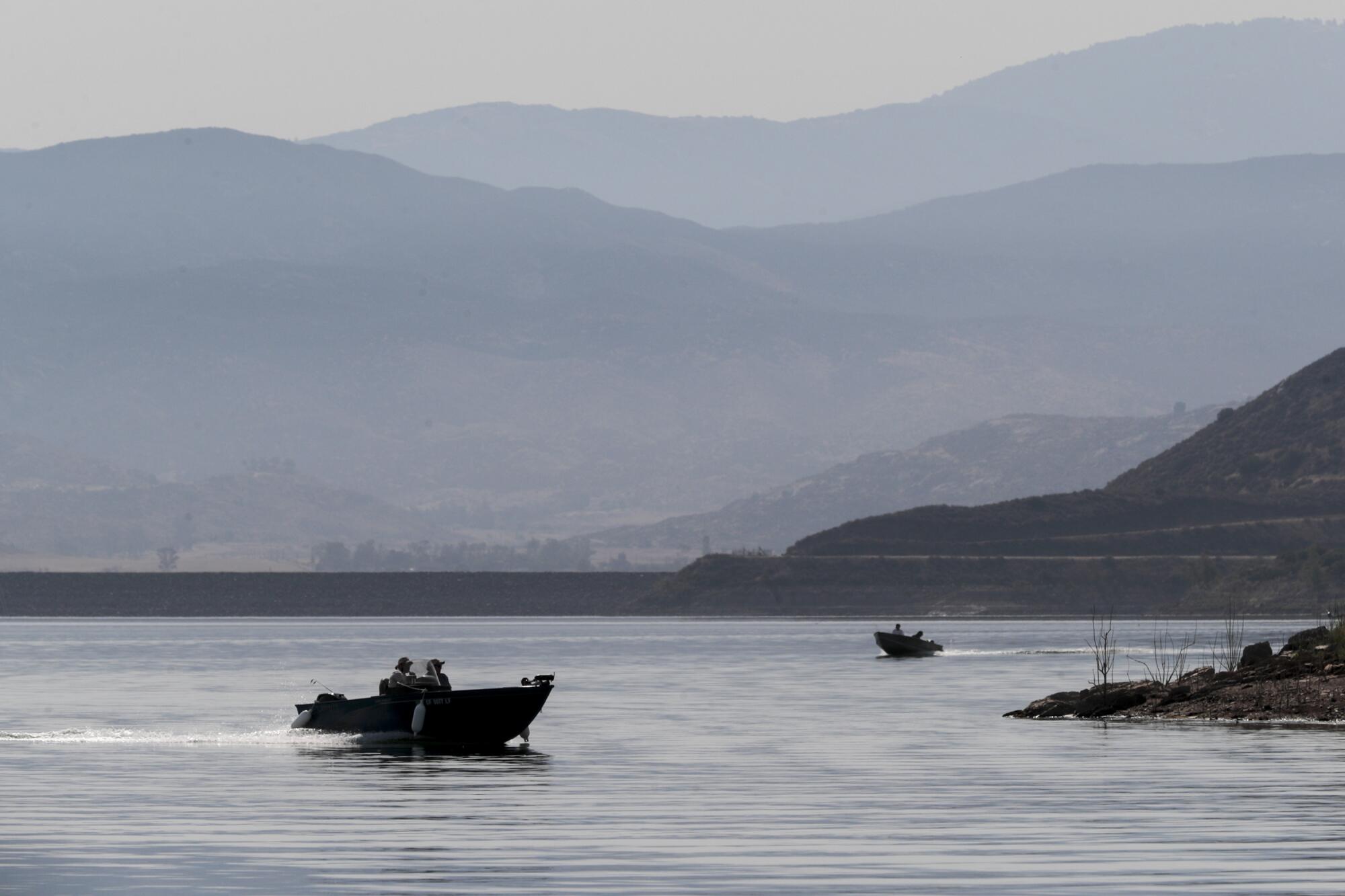
“The state should prepare for another five to six years of drought,” Lund said. “If you are a fish or a frog, you should be very worried about that. If you are a Central Valley farmer, you may want to fallow some fields or sell your land and start again someplace else.” But if you live in an urban area, you have a far larger hedge against drought, thanks to organization, money and political will, Lund said.
“If you live in Southern California, Diamond Valley Lake is an example of what it takes to be successful with water in one of the wealthiest, most densely populated metropolitan areas on Earth,” Lund said.
Amid a second consecutive year of drought, MWD officials are sending roughly 15% of the water stored at Diamond Valley Lake to customers elsewhere to supplement their declining allocations from the state.

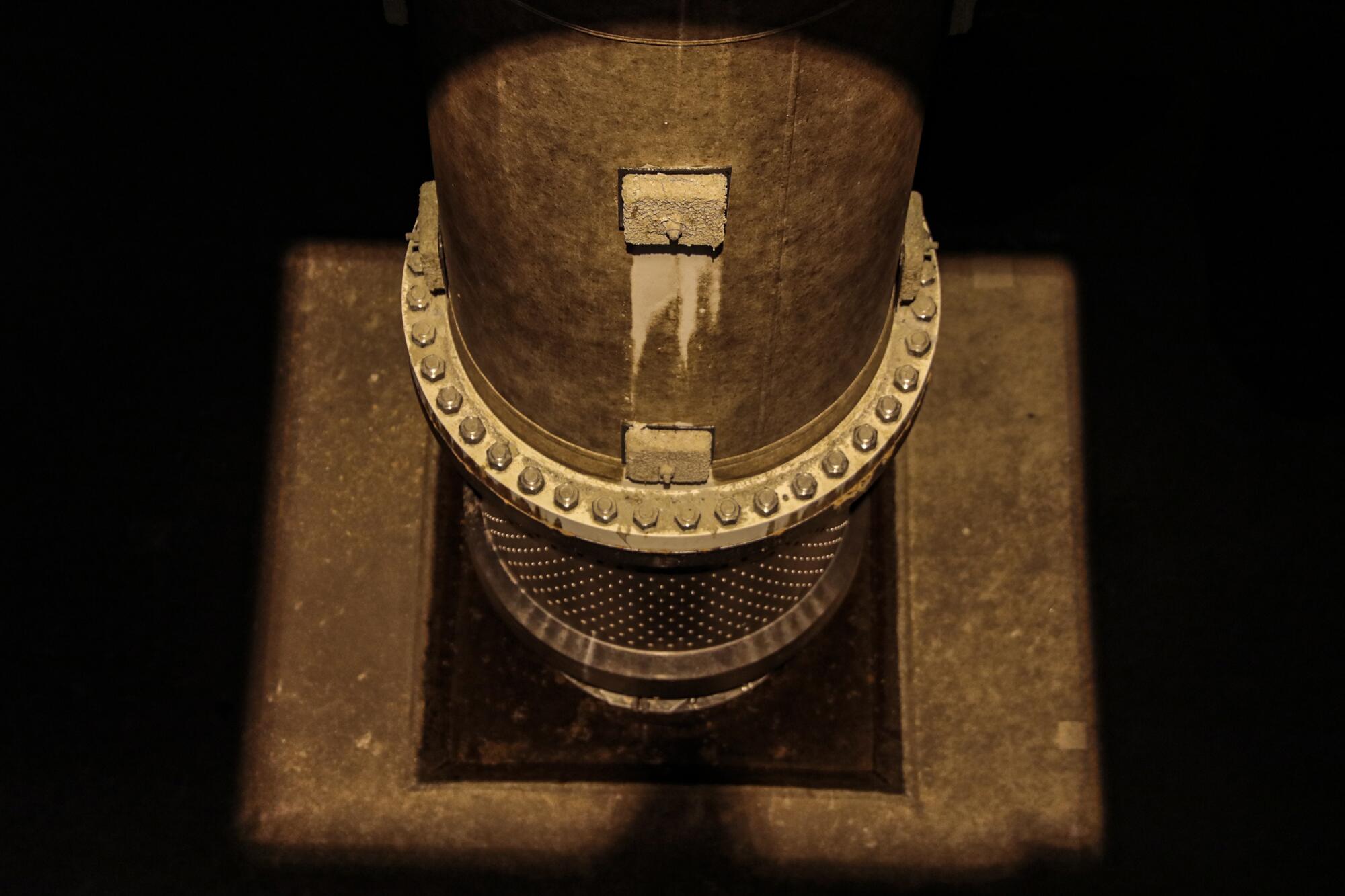
The withdrawals have caused the surface water level to drop a few feet, leaving a bathtub-style ring around the reservoir’s 20 miles of shoreline.
But MWD officials point to a stark contrast between 30 years ago, when a Southern California water shortage forced mandatory conservation measures, and today, when a shortage often merely means tapping reserves.
Back then, the MWD maintained about 600,000 acre-feet of water in storage, either in reservoirs or groundwater basins.
Construction work at the Diamond Valley Lake site — the largest earthen dam project in the U.S. — began in 1995.
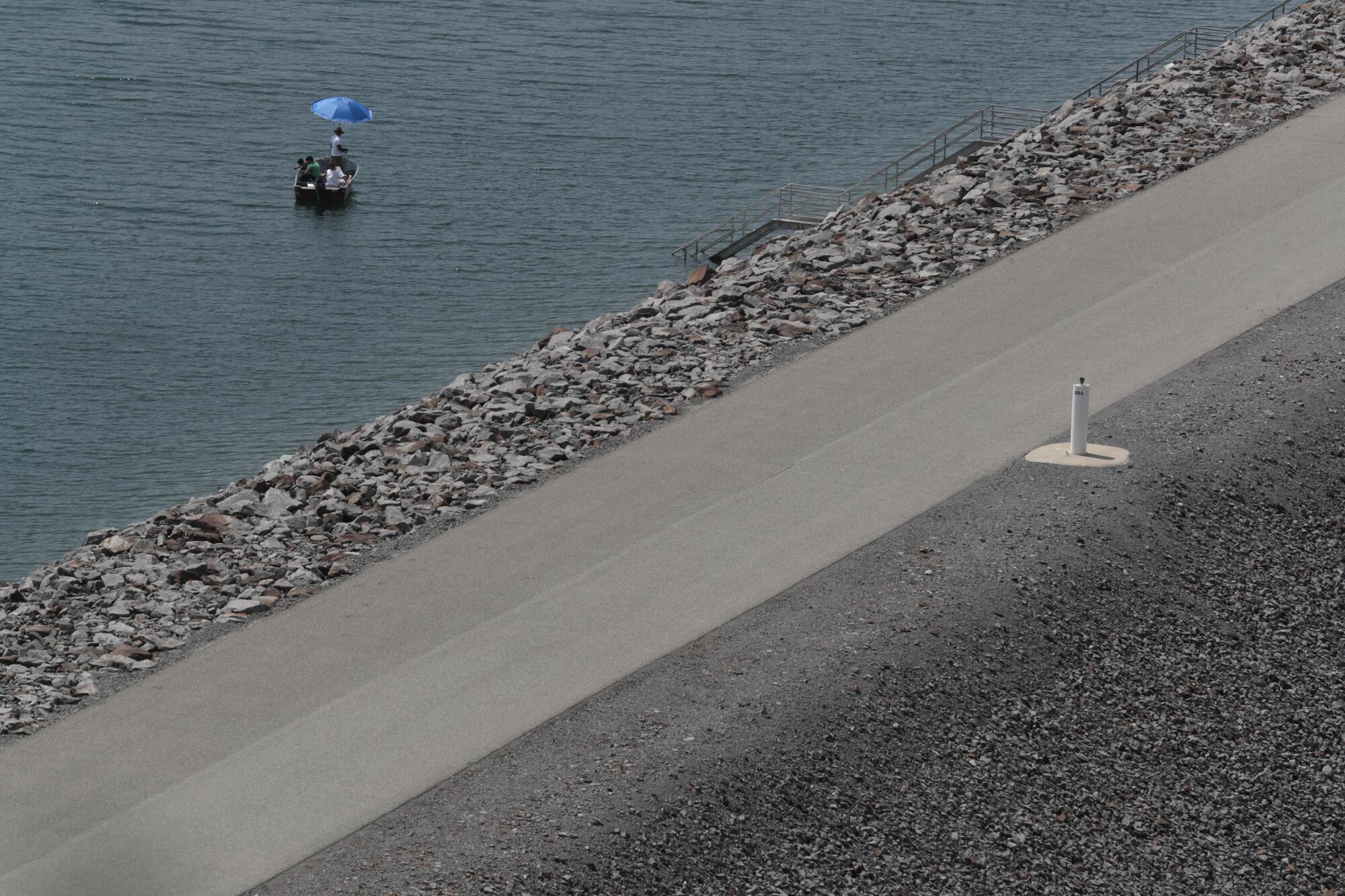
Completed at a cost of $2 billion, the reservoir doubled Southern California’s water storage capacity and helped insulate its economy from the shock of a traumatic breakdown in the state’s aging water infrastructure.
Yamasaki recalled when the project was still under construction, and working at the site could be like walking through a herd of stampeding elephants.
Caravans of massive earthmovers bulldozed more than 110 million cubic yards of dirt into three earth-and-rock dams, up to 285 feet in height and two miles in length. Engineers yelled into hand-held radios to be heard over the clamor of heavy-duty helicopters hovering overhead. Cranes groaned and swayed to erect a 270-foot-tall concrete intake tower equipped with 18 stainless steel valves, each seven feet in diameter.
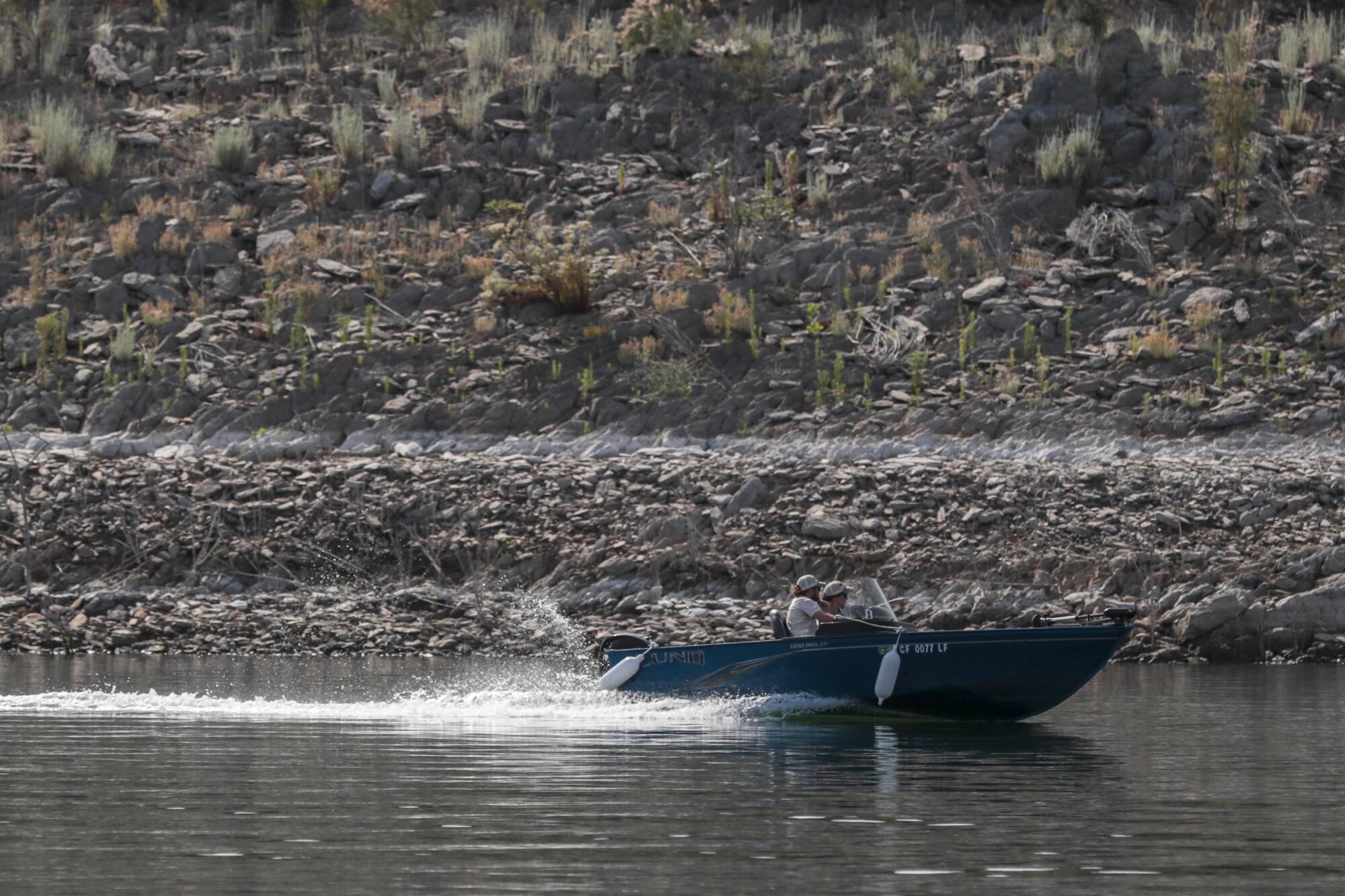
Amid the organized chaos, archaeologists uncovered evidence of Native American habitation dating back more than 7,000 years, and paleontologists unearthed the skeletal remains of mammoths, sloths, lions and camels that were later placed in a museum built on nearby MWD property.
Rep. Jay Obernolte says he will introduce a bill Tuesday asking Congress to extend federal recognition to the Mono Lake Kutzadika Paiute people.
In 2000, the MWD began funneling water from Northern California and the Colorado River Aqueduct into the reservoir. Eventually, the lake covered 4,500 surface acres and provided twice the capacity of Castaic Lake, the next largest reservoir in Southern California.
(Colorado River water has not been used since 2006 because of the threat of the quagga mussel, an invasive species found there, being transported to Diamond Valley Lake.)
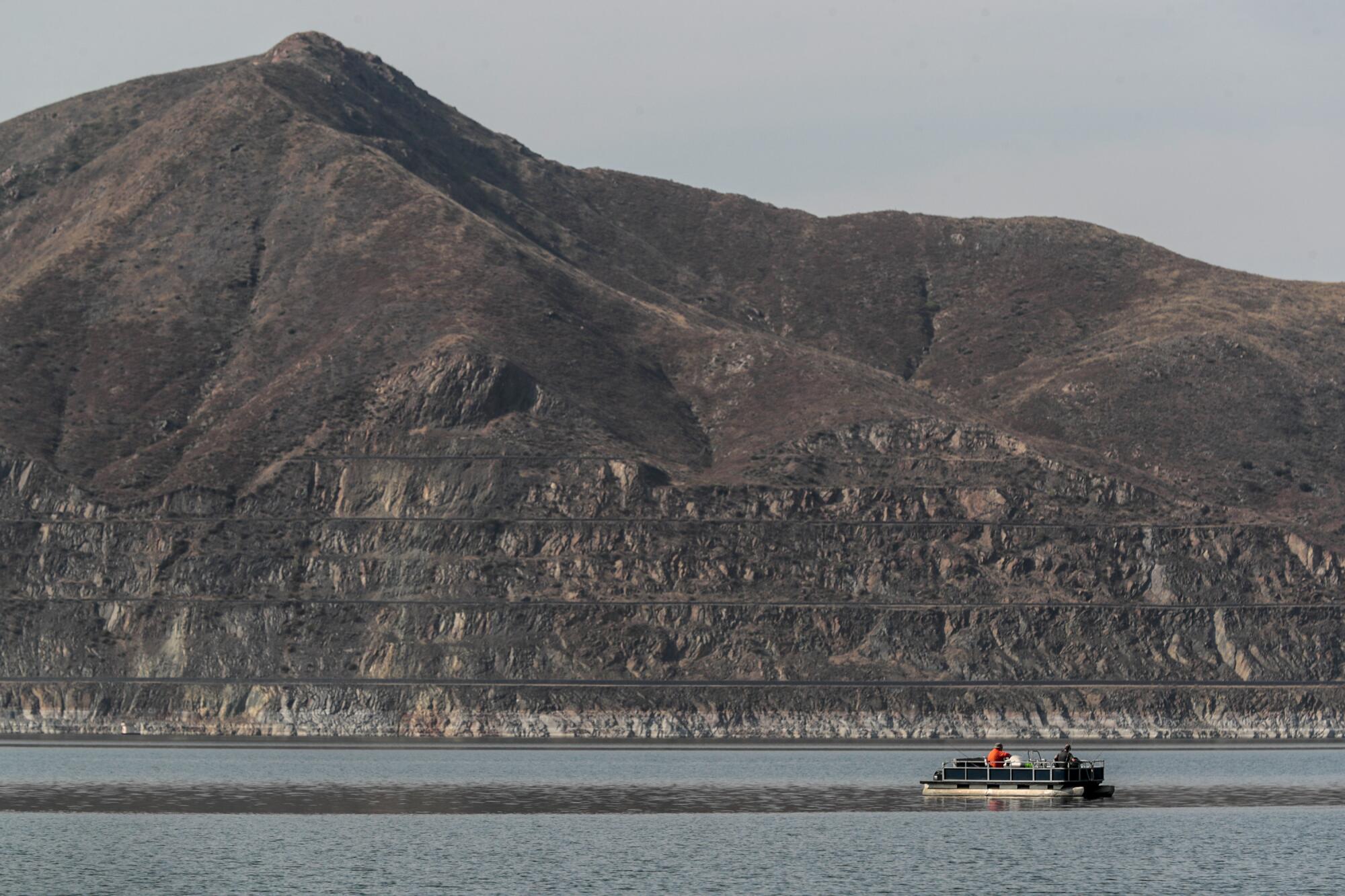
The facility includes the MWD’s largest hydroelectric power plant, where nine electrical generators produce up to 3.3 megawatts each.
Diamond Valley Lake opened in 2003 with a dedication ceremony that praised the “incredible amount of cooperative work it took to finish the job,” Yamasaki said.
After it ended, Yamasaki took his family for a spin in a pontoon boat.
As he motored out with undisguised pride, Yamasaki recalled telling them: “This is what all those long hours on the job and fighting traffic all the way home were all about.”
